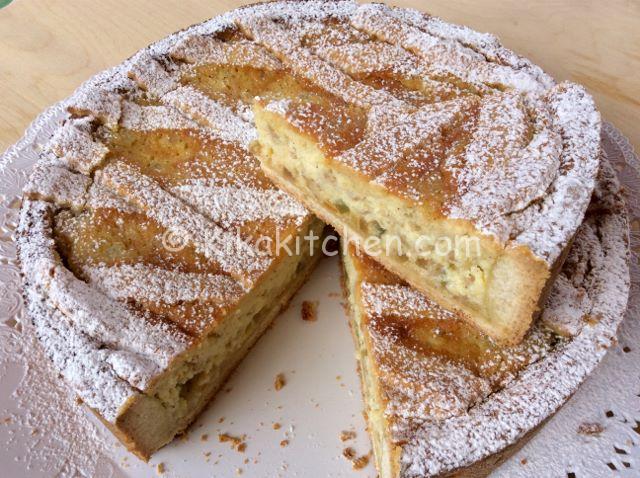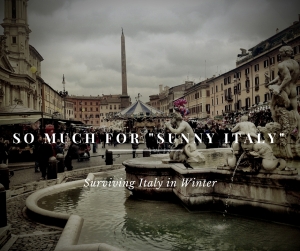The COSI’ group is getting courageous this month, venturing into a theme that hits close to home for not only expats, but also native Italians: the desperate search for a job in Italy.
I wrote this post more than three years ago, but alas, in true Italian style the situation has remained practically identical.
Read on for my thoughts on the Italian job crisis, and what I believe is the only reason why Italy isn’t crowned king of the world…
——————-
Italians are realists. I don’t think I’ve met one who isn’t willing to recognize and/or openly criticize the current state of this country. At the moment, many people around here have a tendency to concentrate on the negative, and for the sake of this post, so will I.
Italy is suffering from a terrible case of low self-esteem, and not without reason. Reeling after the twenty-year reign of a tyrannical, pseudo-Roman emperor wannabe, the state of affairs in today’s Italy can only be described as molto triste (very sad). This country, which has so much going for it, is in total and utter shambles. Premier Monti’s recent efforts may have been baby steps in the right direction, but I’m afraid this black hole has been dug too deep and too dark.
On a macro level, Italy is teetering on the risk of a financial breakdown not far from that of its Mediterranean neighbors in Greece. Overall, the global economic crisis has taken its toll, and things are tight for the working class (although this was the case even before the crisis). Cost of living in the metropolitan areas is comparable to that of New York City. Combine that with some of the lowest salaries and highest gas prices in Europe, and you’ve got tombola (bingo).
After countless brutte figure (bad impressions, oftentimes aptly dubbed, “The Berlusconi Show”), this country’s name has been dragged through the mud while its population has been brutally represented by a lackluster group of ego-centric politicians, each with their own variety of complexes, corruptions, and/or sexual disorders. Gaffe after despicable gaffe from these pagliacci (clowns) has made Italy the laughing stock of the European Union and the entire Western world, time and time again.
Just to play devil’s advocate for a moment though: some members of the EU are quick to depict Italy as the black sheep of the group, criticizing its politics and dismissing it as an unorganized mess of a country – but then when it comes time to sip Chianti overlooking the olive groves in Tuscany, they’re all first in line. Anyway, back to the topic at hand…
What I consider to be the most pressing, serious issue – which the same pagliacci I mentioned earlier still haven’t seemed to prioritize as urgent – is that the young, talented college graduates are fleeing the country at an alarming rate. And with each of them goes a small piece of Italy’s bright future. The most talented Italian youth is going, going, gone – in the hands of countries that can offer them something more, something better.
The worst part is, that something better doesn’t refer to anything so grandiose, like a better job or more money: all they’re looking for is a job (any job at all). With the youth unemployment rate at around 30%, at this point they’d be satisfied to just be able to build a decent (albeit, humble) future. This is hardly a standard the world’s most beloved country should have for its youth. Since their own homeland isn’t even capable of offering them employment and a place in society, young people are forced to abandon it. And who could blame them?
As for those who choose to stay and stick it out, well… They win the chance to have their egos destroyed by interviewing for jobs as waiters and cashiers, with law/business/engineering degree in hand. The youth of today’s Italy have been so beaten and battered down that they’ve lost all sense of enthusiasm before even getting out of the gate. That’s because they know exactly what’s waiting for them once they finally finish their degree (after all, these are some very highly educated do-nothings).
They can already picture themselves hitting thirty, unable to find work in their field, stuck at home cooking carbonara with their parents because they can’t even afford to get their own place. Forget about visualizing an illustrious career; they can’t even get past the hurdle of moving out on their own and entering the workforce.
In the States, anyone who still lives with their parents at that age is generally shunned. They’re labeled as failures – lazy, pathetic losers who couldn’t get their act together long enough to afford rent. In Italy, however, this is the norm. And before you start with the insults, consider the following:
1. The university system is completely different from the American system.
And by different, I mean unstructured and non-sensical. There seems to be no set amount of time to receive a degree. Some finish in three years, others in eight or more. In theory, university should last a maximum of either three or five years depending on your major, but because of the complicated course structure, it’s often longer. And even after having had it explained to me numerous times, I still can’t really wrap my mind around it (don’t think the Italians really can either – they mostly seem disgusted whenever they’re forced to explain it).
What I have been able to understand is that rather than a standard course semester, where your overall grade is comprised of multiple tests, projects, mid-terms, and a final – as well as class participation – each course here consists of just one, overwhelming final exam that determines whether you can move forward to the next course. You technically don’t even have to show up for class the entire semester, as long as you pass the exam on crack (which would be practically impossible, but nonetheless, some do try). There is minimal interaction between professors and peers, and word on the street is some professors are actually instructed to hold a certain number of people back on purpose to keep the course fees coming.
2. Salaries are not commensurate with the cost of living in most cities.
If they’re lucky enough to find a job, university grads are barely scraping by with €1000-1500 per month (take home pay). Yes, you read that correctly. And sadly, that’s not just a starting salary – many can expect to earn that sum for years, perhaps decades. It’s so pathetic I can barely even stand to write it.
But don’t feel sorry for them just yet, or think you necessarily have it so much better – because many of them are driving the newest Audi, regularly buying pairs of €500 shoes, or perhaps just returning from a 5-star resort in some exotic location. No joke. All of that is easy to do when you don’t have to calculate a mortgage, rent, food, or utilities into the equation. Without all those pesky, inconvenient… wait, what are they called? Oh, yeah – living expenses – there’s plenty of liquidity to be spent on, well, pretty much anything you want.
After all, what’s the point of putting away that measly salary? At that rate, you could work for forty years and still not have enough for a down payment on a half-million euro apartment in the center of Rome (and for that price it’d be about the size of a large American garage).
3. The mammoni (mama’s boy/girl) stereotype still rings true, but only to an extent.
It’s true that deep down many people in their late twenties and early thirties love the fact that mamma still does their laundry and irons their shirts. She even prepares lunches for work, and who wouldn’t love that? Mamma makes it extremely difficult to face the cold, cruel world alone, and she knows it.
Italian mothers certainly do find joy in the fact they’re still needed by their adult children, so they don’t push for any changes. Children know the world outside is expensive and not worth their effort, so the option of living within the comforts of the home they grew up in looks more and more appealing. From the point of view of American culture it’s a strange phenomenon, but also an understandable one, given the economic conditions as well as the strong familial cultural tendencies.
The reality of this “failure to launch” stage is that it’s incredibly frustrating for most young people, and it’s stifling to their growth and development as adults. In the US, we pride ourselves on being entirely self-sufficient very early on, but the Italians simply don’t have that opportunity. And if they do, they’re either: a. very lucky; b. being bankrolled by someone; or c. have to make some immense personal sacrifices.
The million-dollar question to the politicians is: WHY can’t they get it together? Do they actually want this country to go to hell? From the outside it would seem like it, although it seems ludicrous since their children live in this country, too. Or, do they? There’s such a great divide between rich and poor here, that sometimes the elite seem immune to this society’s problems; it’s literally as if they’re living in a completely different country, within the same borders.
Wake up, and smell the espresso, Italia… The future of this country should not be in the hands of those who only want to exploit it and suck it dry. If the Italians don’t take back their cherished paese soon, Italy’s best and brightest are all going to end up with British and German accents.
What are your experiences working in Italy? Join the conversation with #COSItaly. Here are some links to other expat points of view on the subject:
Unwilling Expat – “Working for Free and the Arte di Arrangiarsi”
Rick’s Rome – “Finding a Job in Italy”
Girl in Florence – “FAQ on Working and Salaries in Italy”
Others to come…




